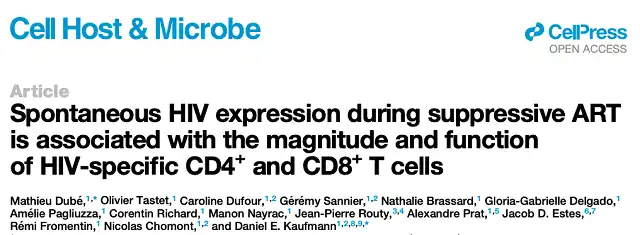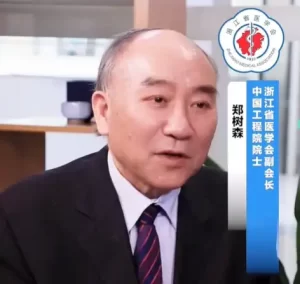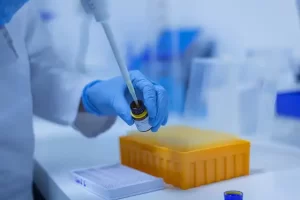“Dormant” HIV still produces RNA and proteinsDuring treatment
- Paternal Microbiome Perturbations Impact Offspring Fitness
- New Report Casts Doubt on Maradona’s Cause of Death and Rocks Manslaughter Case
- Chinese academician unable to provide the exact source of liver transplants
- Early Biomarker for Multiple Sclerosis Development Identified Years in Advance
- Aspirin Found Ineffective in Improving Recurrence Risk or Survival Rate of Breast Cancer Patients
- Child Products from Aliexpess and Temu Contain Carcinogens 3026x Over Limit
“Dormant” HIV still produces RNA and proteinsDuring treatment
- AstraZeneca Admits for the First Time that its COVID Vaccine Has Blood Clot Side Effects
- Was COVID virus leaked from the Chinese WIV lab?
- HIV Cure Research: New Study Links Viral DNA Levels to Spontaneous Control
- FDA has mandated a top-level black box warning for all marketed CAR-T therapies
- Can people with high blood pressure eat peanuts?
- What is the difference between dopamine and dobutamine?
- How long can the patient live after heart stent surgery?
“Dormant” HIV still produces RNA and proteinsDuring treatment.
Antiretroviral therapy (ART) for HIV is considered a method of relief rather than a cure, as patients typically harbor a reservoir of HIV-infected cells that may resurface if treatment is discontinued. It is commonly believed that these reservoir cells remain in a dormant state during treatment.
However, two independent research teams have discovered that a portion of these reservoir cells spontaneously produces HIV RNA and proteins, which may impact a patient’s HIV-specific immune response. These findings were published on September 13, 2023, in the journal Cell Host & Microbe, a publication of Cell Press.
“It’s just a semblance of dormancy,” said Daniel Kaufmann, an immunovirologist at the University Hospital of Lausanne, the University of Lausanne, Switzerland, and the University of Montreal, and one of the authors of one of the papers. “Even in individuals undergoing treatment, HIV remains somewhat active and continues to interact with the immune system. We need to understand whether these interactions have clinical relevance.”


Previous research indicated that “dormant” HIV reservoir cells in the lab could be reactivated to produce viral RNA and proteins, but it was unclear if this phenomenon occurred within HIV-infected individuals. Daniel Kaufmann stated that they wanted to determine if this phenomenon was real, which parts of the virus were being expressed if it was, and whether they had an impact on the immune system.
To investigate this, researchers collected blood samples from 18 HIV-infected individuals who had been on antiretroviral drugs for over three years, drugs that can inhibit HIV’s growth but do not actually kill the virus. They then used a laboratory technique called RNA flow cytometry to categorize CD4+ or “helper” T cells (the cell type selectively infected by HIV) based on whether they were infected with HIV and further observed if they were actively producing HIV RNA or proteins. T cells were also characterized, such as those combating intracellular viruses and those defending against extracellular bacteria, to determine which CD4+ T cell subtypes were more likely to host HIV.
“Our technology allowed us to look at individual cells to see if they contained the virus and which part of the virus they were expressing,” said Mathieu Dubé, the first author of the paper and an immunovirologist at the University of Montreal. “For each patient, we could estimate how many of these cells were still active, and we could also look for connections between viral features and cell characteristics.”
The research team found that among these 18 patients, 14 had reservoir cells capable of spontaneously producing HIV RNA. In seven patients, the reservoir cells also produced HIV proteins, including p24, a component of the HIV envelope.
Daniel Kaufmann explained that most of the HIV remaining in the patients’ bodies were defective or unable to replicate true viruses, but they found that these defective viruses could still produce viral RNA and, at times, proteins.
Although these viral RNA and protein fragments are non-functional “fragments,” researchers found that they were sufficient to stimulate an immune response. Given that a stronger HIV-specific immune response was associated with a more active HIV reservoir, researchers suspect that this immune response may not be helpful, but more research is needed to validate this hypothesis.
“Our data suggest that the RNA and proteins produced by these viral reservoirs may be drivers of inflammation,” Daniel Kaufmann said. “This could be significant because some individuals undergoing antiretroviral therapy still suffer from infections, such as heart disease, frailty, and premature osteoporosis.”
When studying which types of CD4+ T cells were more likely to carry active viral reservoirs, researchers found that T cells with certain phenotypes and functions were prominent.
“Some subgroups appear to be more susceptible to infection, such as memory cells and Th17 cells involved in intestinal immune protection, but there isn’t a clear, distinct CD4+ T cell type that is more inclined to carry the virus,” said Mathieu Dubé. “In fact, most CD4+ T cells contain the virus.”
While all patients in the study were white males, researchers still observed significant differences among the patients. They suggest that future research should further investigate these variations among patients and explore HIV reservoirs in more diverse patient populations.
The second paper, led by immunologist Lydie Trautmann at the Vaccine and Gene Therapy Institute of Oregon Health & Science University in the United States, also found that a subset of CD4+ T cells expressed viral RNA spontaneously during antiretroviral therapy, especially in a cohort of Thai participants with acute and chronic infections at the start of treatment. Viral protein production was lower in acute infection patients, but the immune responses between the two groups were similar.


The authors of the paper stated, “Our research indicates that immune dysfunction driven by active HIV reservoirs during antiretroviral therapy may lead to a lack of viral control after treatment interruption, as it prevents the differentiation of functional stem cell-like HIV-specific CD8+ T cells, which can establish effective rapid recall responses. Therefore, HIV remission strategies may need to target pre-viral transcriptional activity in active HIV reservoirs during antiretroviral therapy to harness HIV-specific CD8+ T cells for controlling viral rebound after treatment cessation.”
Paper Links:
1. https://doi.org/10.1016/j.chom.2023.08.006
2. https://doi.org/10.1016/j.chom.2023.08.012
(source:internet, reference only)
Disclaimer of medicaltrend.org
Important Note: The information provided is for informational purposes only and should not be considered as medical advice.



